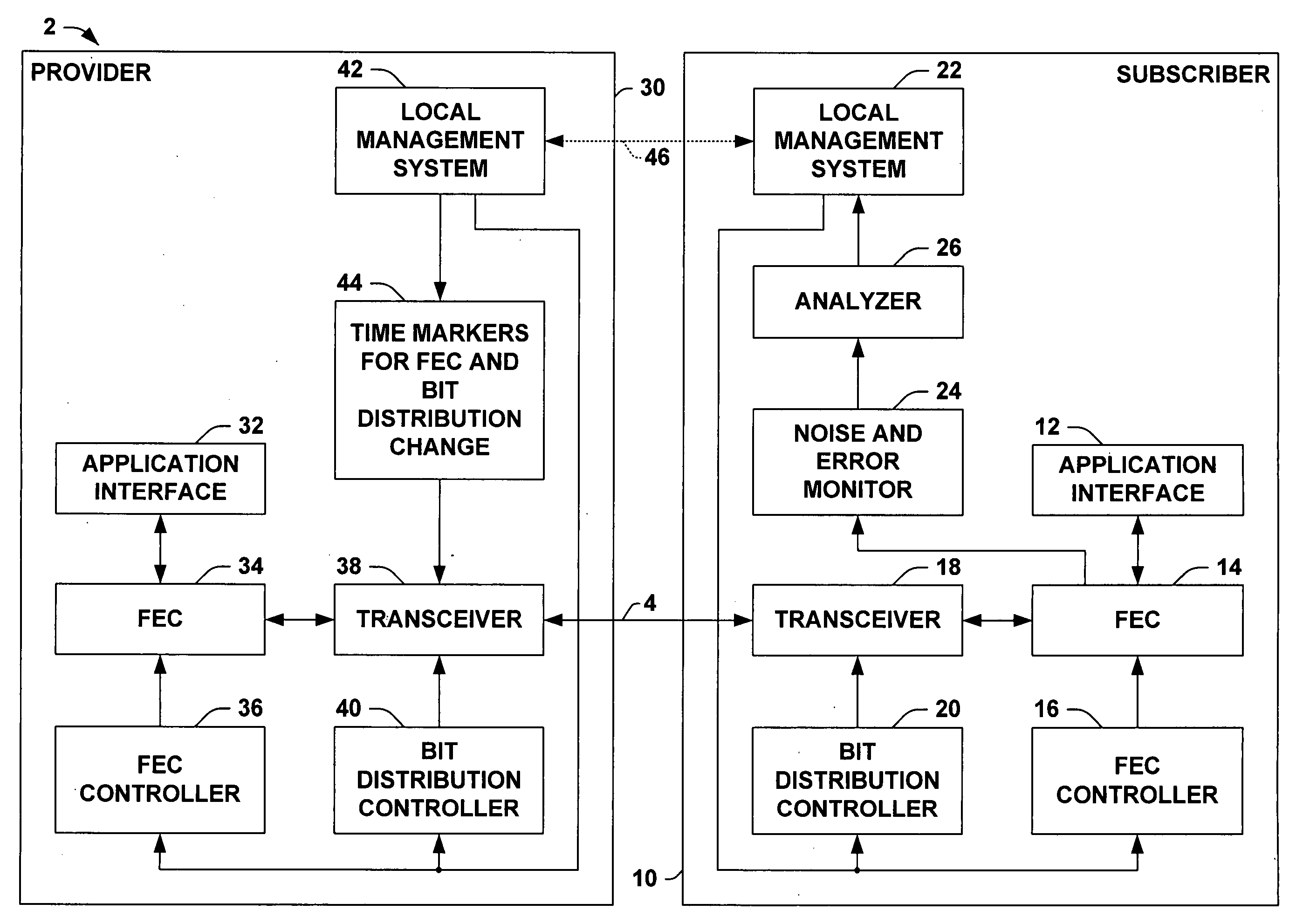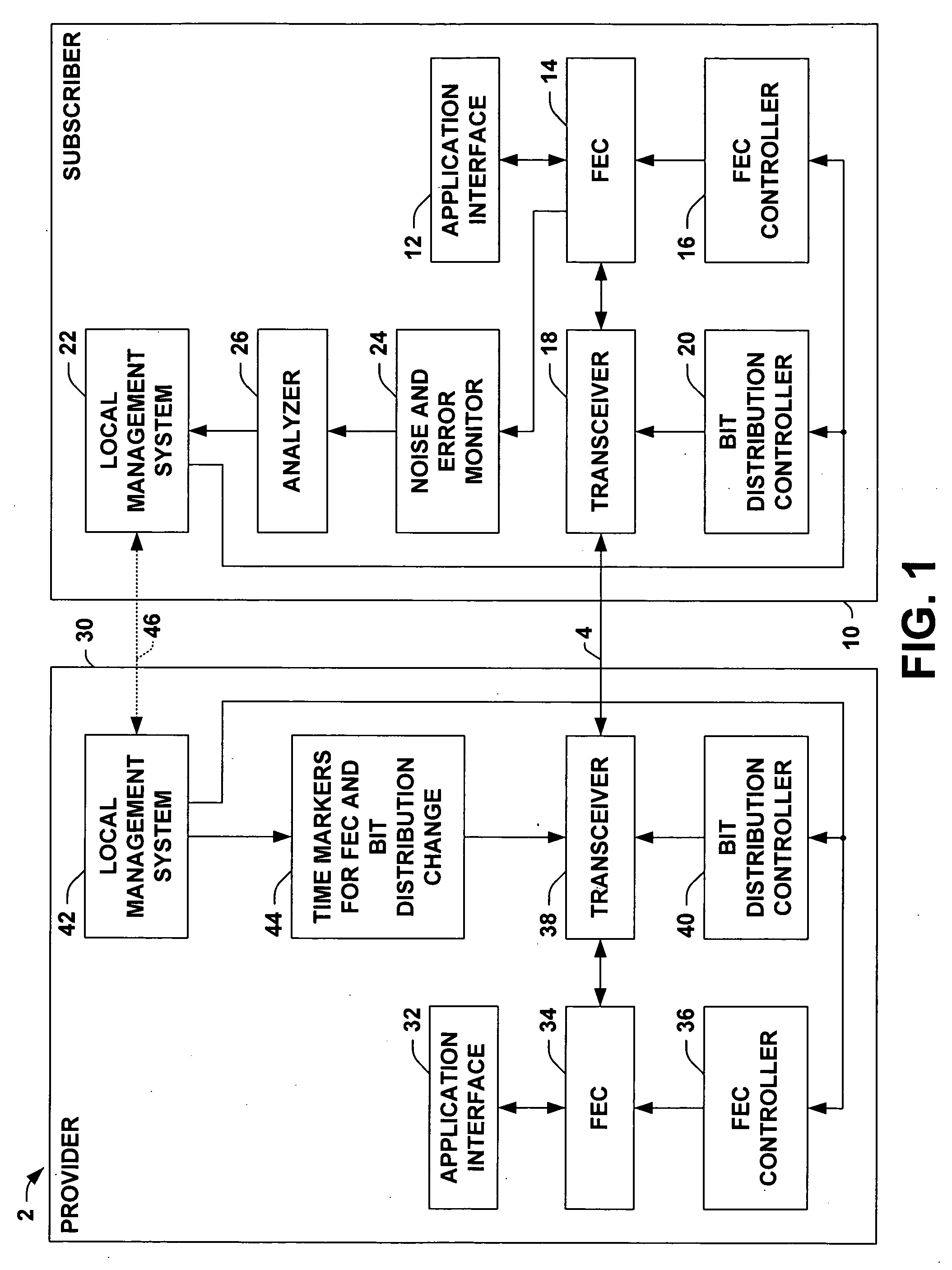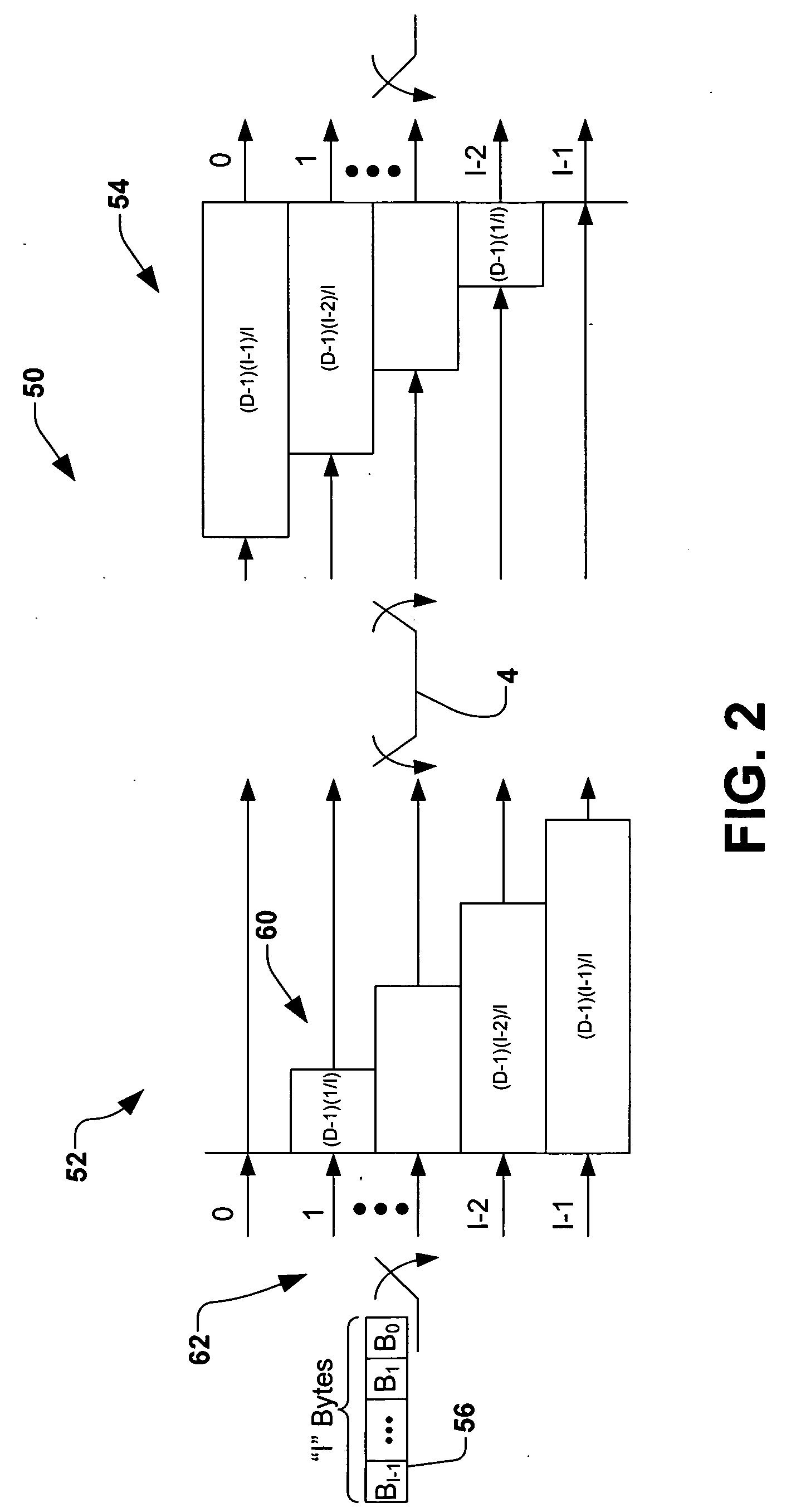Seamless change of depth of a general convolutional interleaver during transmission without loss of data
a general convolutional interleaver and transmission technology, applied in the field of communication systems, can solve problems such as non-optimal system data rate, noise generation by signals on neighboring wire pairs, and reduction of data bits on subcarriers
- Summary
- Abstract
- Description
- Claims
- Application Information
AI Technical Summary
Benefits of technology
Problems solved by technology
Method used
Image
Examples
Embodiment Construction
[0031] One or more implementations of the present invention will now be described with reference to the attached drawings, wherein like reference numerals are used to refer to like elements throughout. The invention relates to communication systems and methods for adaptive adjustment of system parameters to combat impulse noise, which is hereinafter illustrated in the context of an exemplary DSL multicarrier communication system using Discrete Multitone Transmission (DMT) modulation with interleaving (IL), and an interleaver depth adjustment for impulse noise protection. However, the invention finds utility in association with any type of communication systems, including but not limited to DSL systems, and single or multicarrier communication systems wherein any type of interleaving may be employed and dynamically adjusted according to impulse noise or other type conditions.
[0032] The invention involves monitoring impulse noise conditions and adjusting impulse noise protection para...
PUM
 Login to View More
Login to View More Abstract
Description
Claims
Application Information
 Login to View More
Login to View More - R&D
- Intellectual Property
- Life Sciences
- Materials
- Tech Scout
- Unparalleled Data Quality
- Higher Quality Content
- 60% Fewer Hallucinations
Browse by: Latest US Patents, China's latest patents, Technical Efficacy Thesaurus, Application Domain, Technology Topic, Popular Technical Reports.
© 2025 PatSnap. All rights reserved.Legal|Privacy policy|Modern Slavery Act Transparency Statement|Sitemap|About US| Contact US: help@patsnap.com



